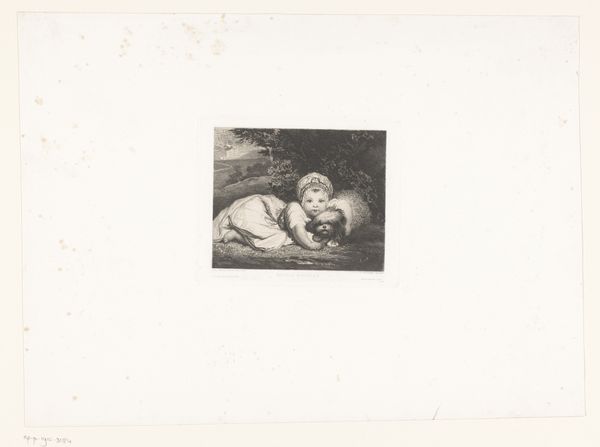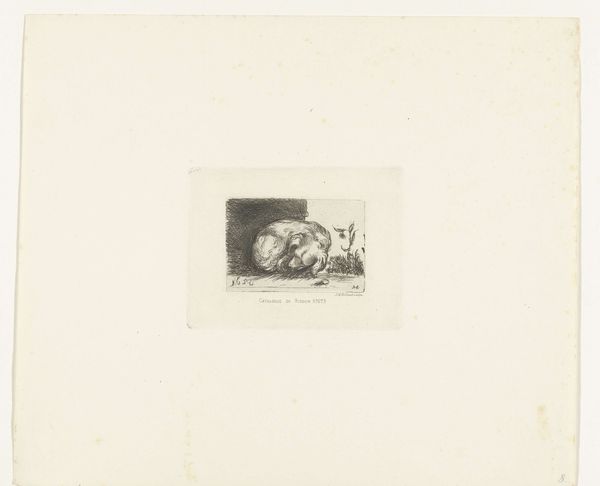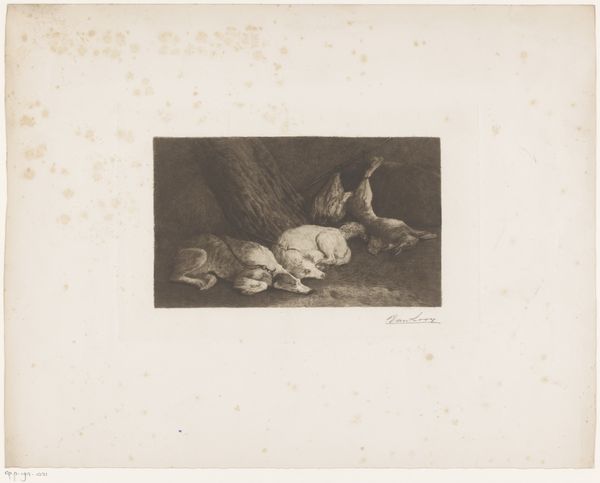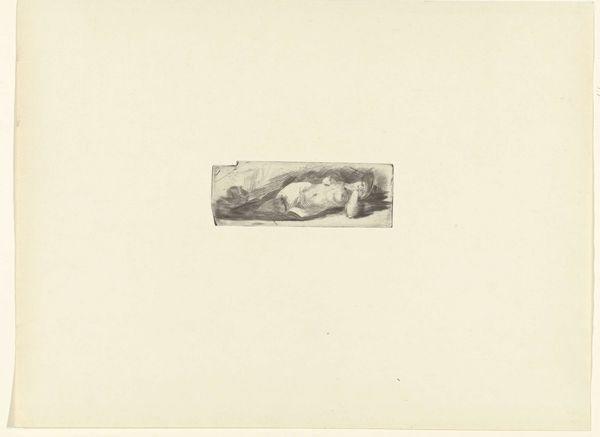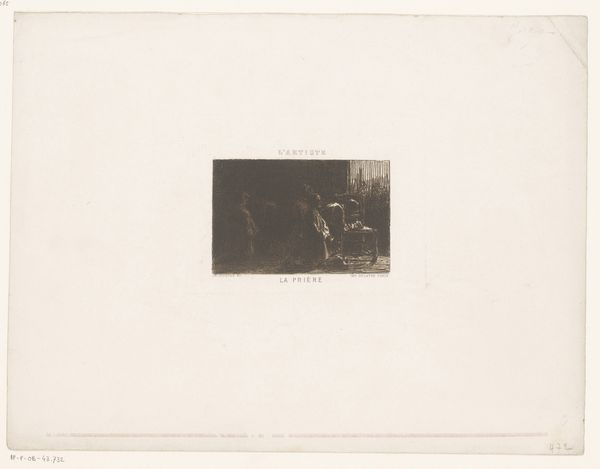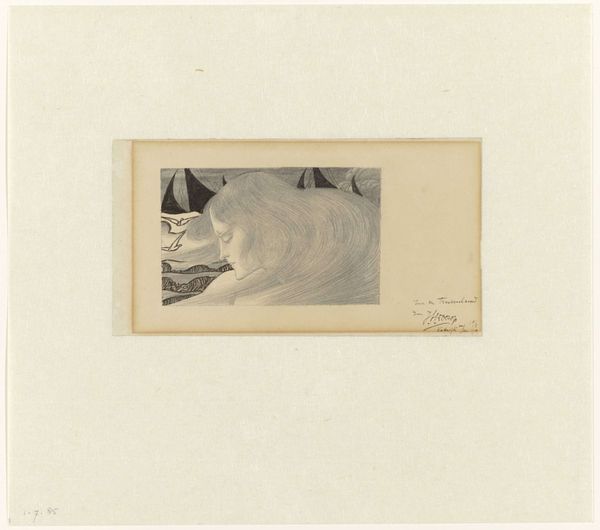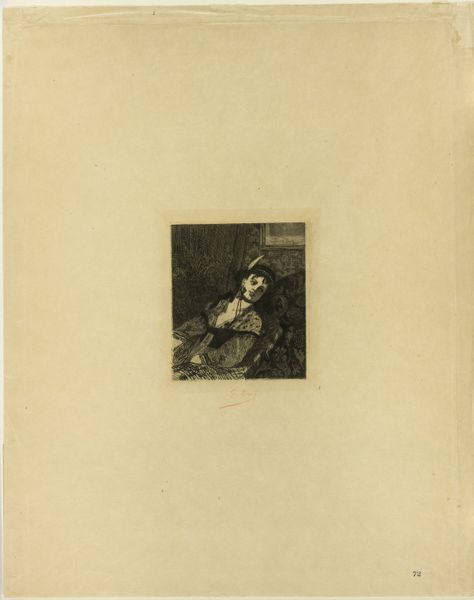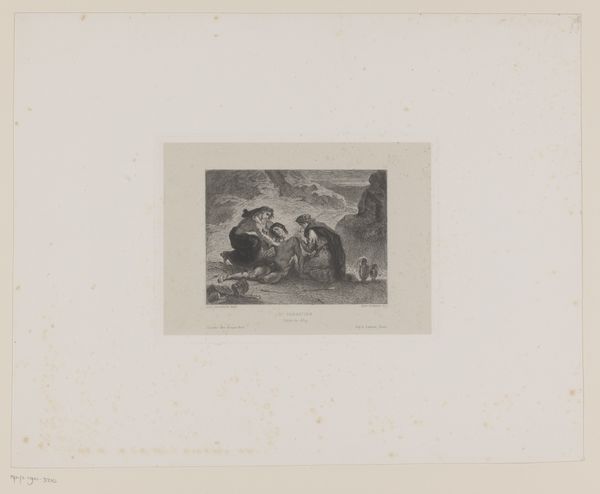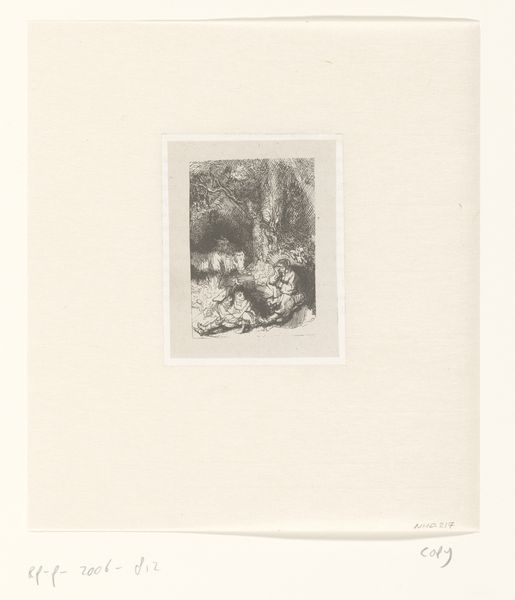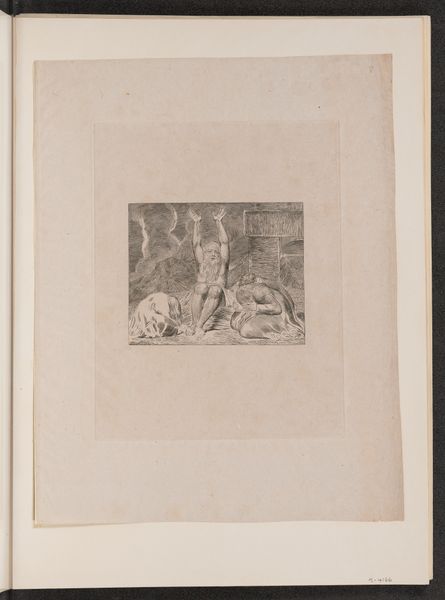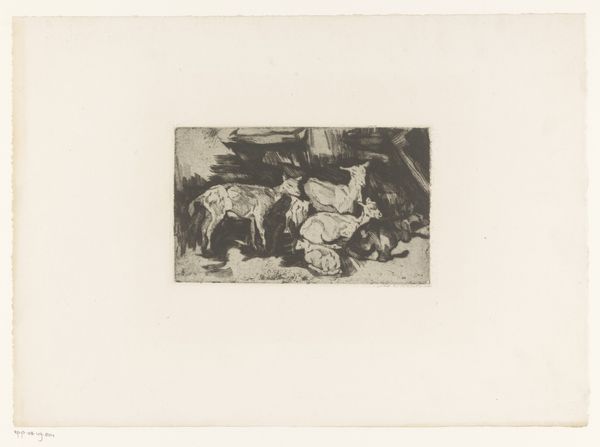
Ängste (Fears) from Ein Handschuh (A Glove). Cyclus von zehn Compositionen radirt. Rad. Opus VI, Plate VII. First edition 1881
0:00
0:00
Dimensions: Overall: 18 5/16 x 26 in. (46.5 x 66 cm)
Copyright: Public Domain
Editor: So, here we have Max Klinger's etching, "Ängste (Fears)," from his "Ein Handschuh (A Glove)" series, created in 1881. It's quite a haunting image. A woman seems to be in bed, perhaps asleep, while a large, disembodied hand reaches towards her, surrounded by other strange shapes. What stands out to me is how it seems to represent the anxiety of the era. What do you make of it? Curator: It's fascinating how Klinger uses this series, and especially this image, to reflect the rising anxieties of the late 19th century. Remember, this was a time of rapid industrialization, social upheaval, and new scientific discoveries that challenged established worldviews. He deliberately utilizes symbolism to tap into the collective unconscious, addressing those social and psychological fears. What do you notice about the symbolic representation of "the glove?" Editor: Well, the glove is present in other images in the series. But I am trying to understand how anxieties during the time period would cause artists to add a strange twist in everyday objects. Curator: Klinger transforms something mundane, like a glove, into an uncanny and unsettling presence. Consider how the emerging fields of psychology, like the work of Freud, began exploring the hidden depths of the human mind during this era. Could this glove then represent repressed desires, or anxieties that simmer beneath the surface of Victorian society? What is its role? Editor: The glove could embody the hidden fears and frustrations that were often repressed in that time period? Klinger uses art as a mirror reflecting cultural unease and unspoken tensions. That definitely gives me something to think about. Thank you. Curator: And hopefully encourages you to examine art as a reflection of cultural and historical forces shaping not just the artwork, but the artist and audience alike.
Comments
No comments
Be the first to comment and join the conversation on the ultimate creative platform.
